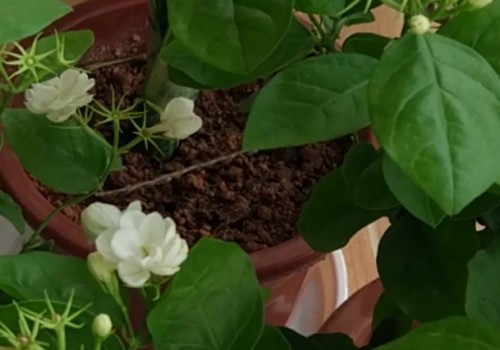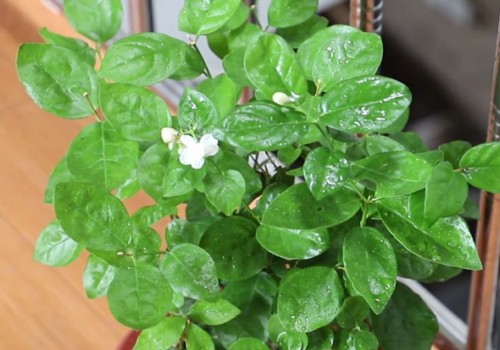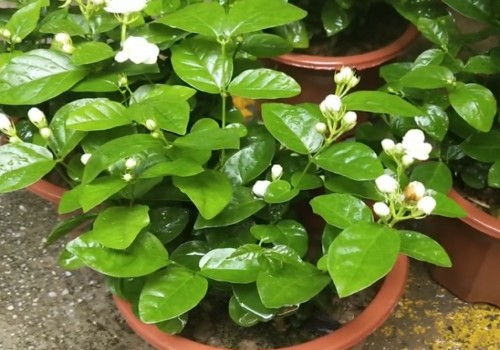What if jasmine blossoms little or no?
Jasmine gives people the impression of green leaves and white flowers, accompanied by a faint fragrance. The flowering period of jasmine is particularly long, and its blooming can often be seen from late spring and early summer to late autumn and early winter. But if we take good care of it, we can even blossom in four seasons.

However, it is difficult to make jasmine blossom in cold winter. after all, jasmine has poor cold resistance. In winter, the ambient temperature needs to be kept above 12 °C in order for jasmine to blossom. But think of jasmine flowers in the hot summer will not only bring us a trace of coolness, but also expected to bring us a sense of warmth in winter, all the efforts are worth it.
Usually, jasmine can fully reflect its value and charm at flowering stage. If we encounter the situation that it blossoms little or not, it will inevitably affect the embodiment of its application value. Therefore, we need to timely investigate the reasons for little or no flowering, and then scientifically adjust the means of maintenance and management to ensure that the plant can blossom smoothly to our satisfaction. So, what if jasmine blossoms little or no?
In fact, when we encounter the phenomenon that jasmine blossoms less or grows only branches and leaves without blooming, we should not be anxious or blindly adjust the means of maintenance and management, otherwise it may not only be of no help to improve flowering, but may even lead to new growth problems. Today, the editor will share with you a method that can not only make jasmine blossom more, but also make the flowers more fragrant and the leaves greener.
This method is to apply a little potassium dihydrogen phosphate and vinegar to the jasmine at the right time. Potassium dihydrogen phosphate is rich in phosphorus and potassium, which are the two most important nutrients to promote plant flowering. While vinegar is acidic, jasmine is a kind of acid-loving flowering plant, so it can effectively promote its growth and flowering.
In order to save trouble, many people often use garden soil and tap water to raise jasmine flowers, but the original garden soil is easy to harden after being used for a long time, and its own permeability is relatively poor. In addition, tap water is poured from time to time, and there is bleach used for disinfection in tap water, so it is easy for furniture basin soil to consolidate and affect the infiltration of fat and water. At the same time, it will also make the basin soil slightly alkaline, which naturally can not make the acid-loving jasmine grow healthily.
And we use potassium dihydrogen phosphate, can play a role in promoting jasmine flowering, after all, plant flowering needs phosphorus and potassium fertilizer, especially potash fertilizer plays a key role. And take a little vinegar into vinegar solution to pour in the basin soil, can improve the soil quality, so that the basin soil shows a slightly acidic, so that the soil is more suitable for the growth of jasmine.
Because jasmine flowers bloom little or not, it is usually caused by alkaline soil or lack of fertilizer, and these two problems can be well solved by topdressing potassium dihydrogen phosphate and watering vinegar solution. Therefore, jasmine is naturally prone to the effect of more flowering, strong fragrance and green leaves.
Time: 2019-05-27 Click:
- Prev

What if the leaves of jasmine turn yellow?
Jasmine is a kind of evergreen flower plant that many potted friends like to grow in pots. As for flowering plants, everyone hopes to raise them well and let them blossom as scheduled. However, for jasmine, many novice people will encounter the phenomenon of yellowing of their leaves, which not only affects flowering.
- Next

What if potted jasmine doesn't blossom?
In the eyes of many people, jasmine is a flowering machine, which shows that its flowering period is long enough. In fact, jasmine blossoms from May to November every year, but it is not known that jasmine blossoms from new branches, one crop after another, which is why it blossoms for so long.
Related
- Fuxing push coffee new agricultural production and marketing class: lack of small-scale processing plants
- Jujube rice field leisure farm deep ploughing Yilan for five years to create a space for organic food and play
- Nongyu Farm-A trial of organic papaya for brave women with advanced technology
- Four points for attention in the prevention and control of diseases and insect pests of edible fungi
- How to add nutrient solution to Edible Fungi
- Is there any good way to control edible fungus mites?
- Open Inoculation Technology of Edible Fungi
- Is there any clever way to use fertilizer for edible fungus in winter?
- What agents are used to kill the pathogens of edible fungi in the mushroom shed?
- Rapid drying of Edible Fungi

